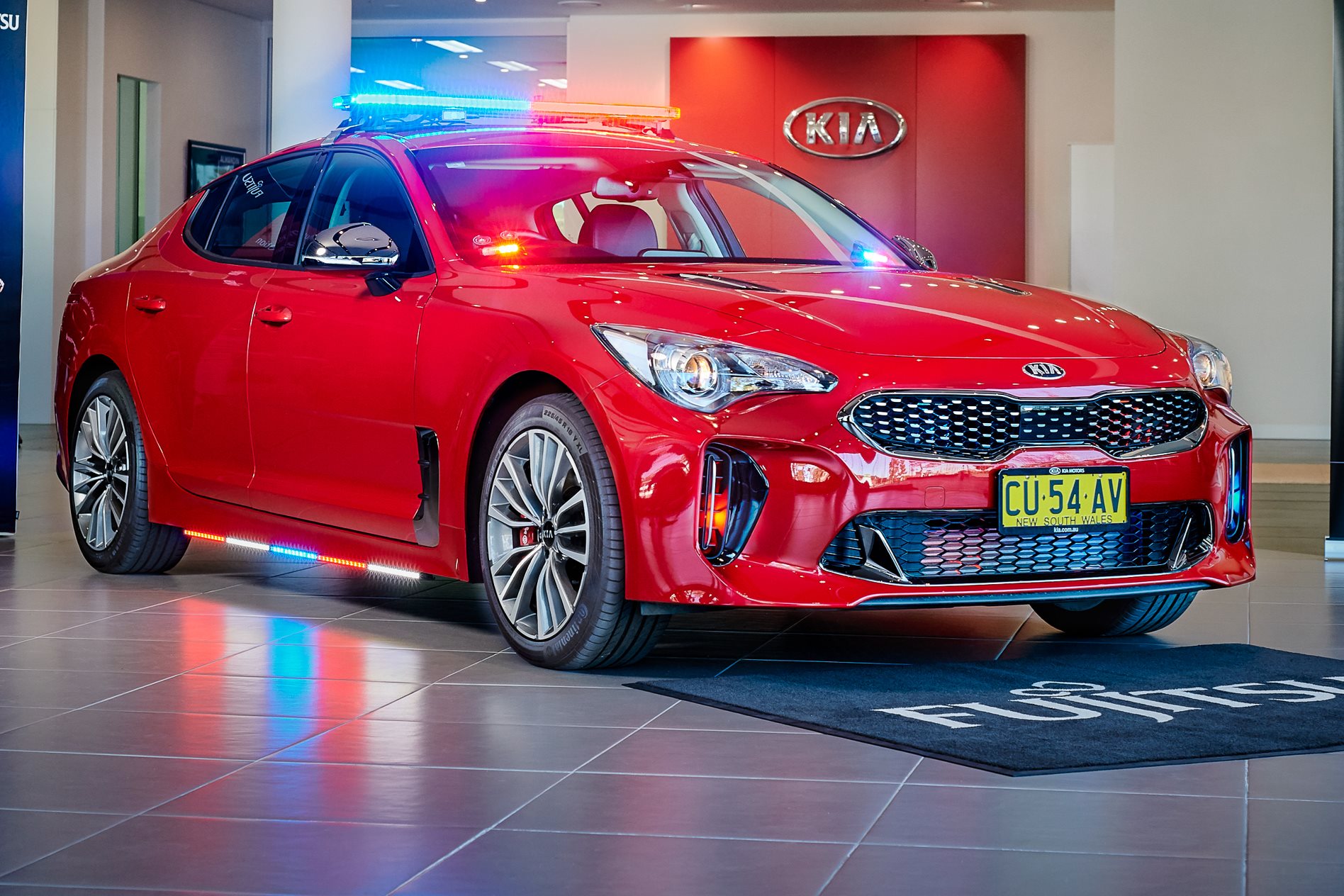
If you’ve ever seen one of those reality shows that portray day-to-day police work, then you’ll have an idea of what the inside of the average patrol car looks like.
In many cases, the compromises that police forces are forced to make to fit equipment to their respective cars render them uncomfortable and impractical at best, and technically illegal at worst.
But a joint development between computer giant Fujitsu and Kia‘s Australian office is set to shake up the world of law enforcement.
In essence, Fujitsu had an idea to marry some of its vehicle ecosystem products into a police car, in order to try and reduce the complexity and costs of building a typical police rig as well as improve safety for the officers who use them.
Most popular police stories
- Kia Stinger for NT police
- ZB Commodore shines at Victorian academy
- 1981 Holden Commodore VK police car restored
Adding equipment that sits in front of airbag panels, for example (below), or directly over the ventilation ducts are common issues when it comes to equipping a modern police car.
As well, officers are required to log onto multiple systems dozens of times or more in a shift, as well as learn the intricacies of sometimes highly complex systems, all while conducting sometimes dangerous operations.
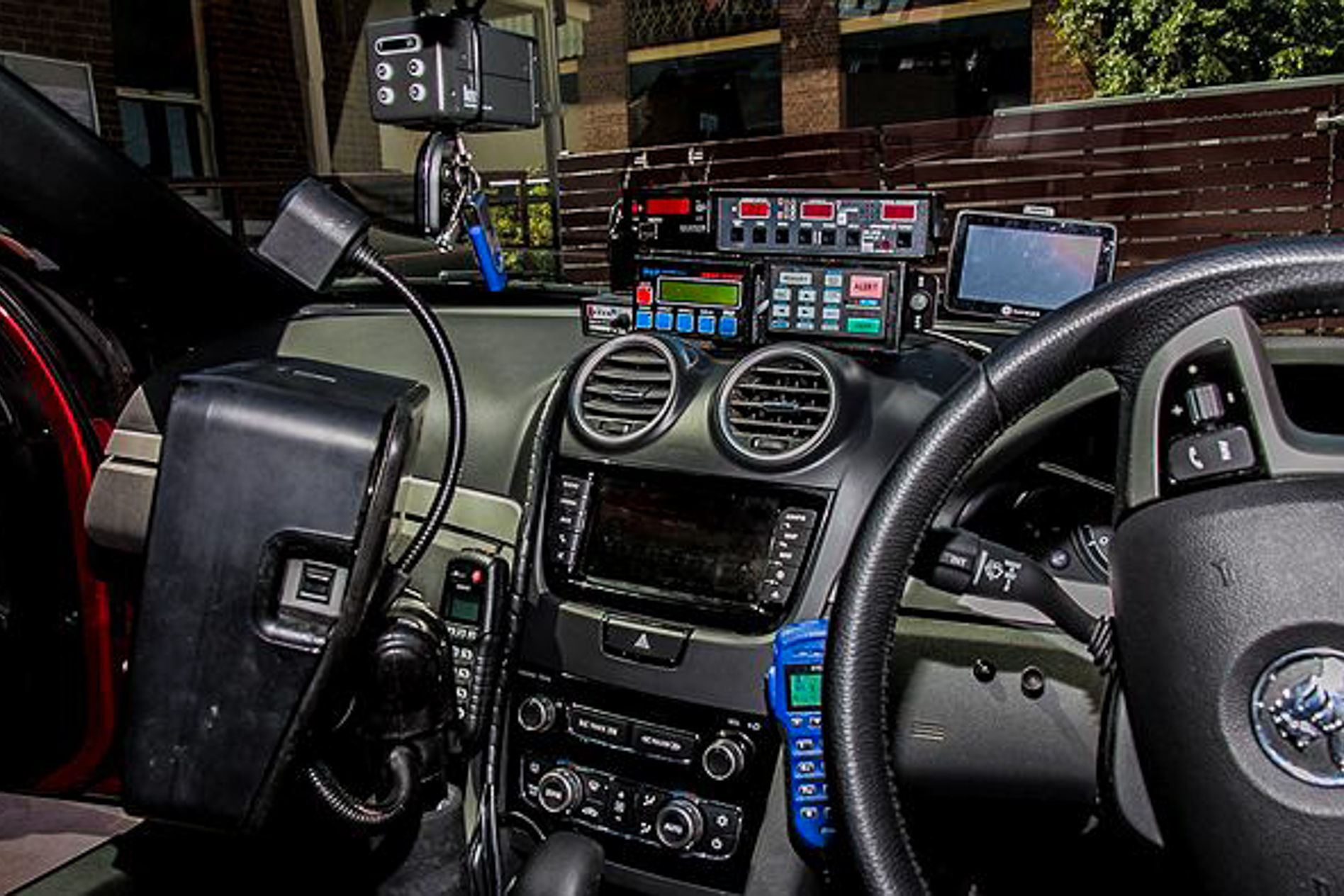
Hamer revealed that he and the company had been chasing the wider car industry for more than five years to offer a potential solution in the form of a greatly simplified operator-to-vehicle interface.
“We hit everyone, but we got no response,” Hamer said. “After we talked with Kia, an hour later, they called us and said ‘what colour car do you want?’ They get it.”
For its part, Kia saw the upside straight away. “The development of this ground-breaking technology and its potential for integration into a wide range of Kia product highlights the outside-the-box thinking that Kia has always embraced,” Kia’s chief operating officer Damien Meredith said.
A black Stinger was chosen, and it was built at Kia Motor’s HQ in Sydney in collaboration with Kia and Fujitsu technical staff.
It’s no coincidence; the Stinger is already in use in three states and territories as a fully-fledged highway patrol vehicle.

Hamer said that one of the disadvantages of equipping new police cars is the length of time the build takes, as well as the modifications that need to occur. He cited an example where Victorian police force technicians are forced to drill 30mm holes in the carbon fibre roof of a BMW X5 in order to mount a lightbar and aerials to the vehicle.
“We don’t even void the warranty,” said Hamer. “No more pulling cables out and mounting everything with tech screws. We can distil nine or more cables into one umbilical that runs through a channel and into a waterproof connector that Kia adds to the car.”
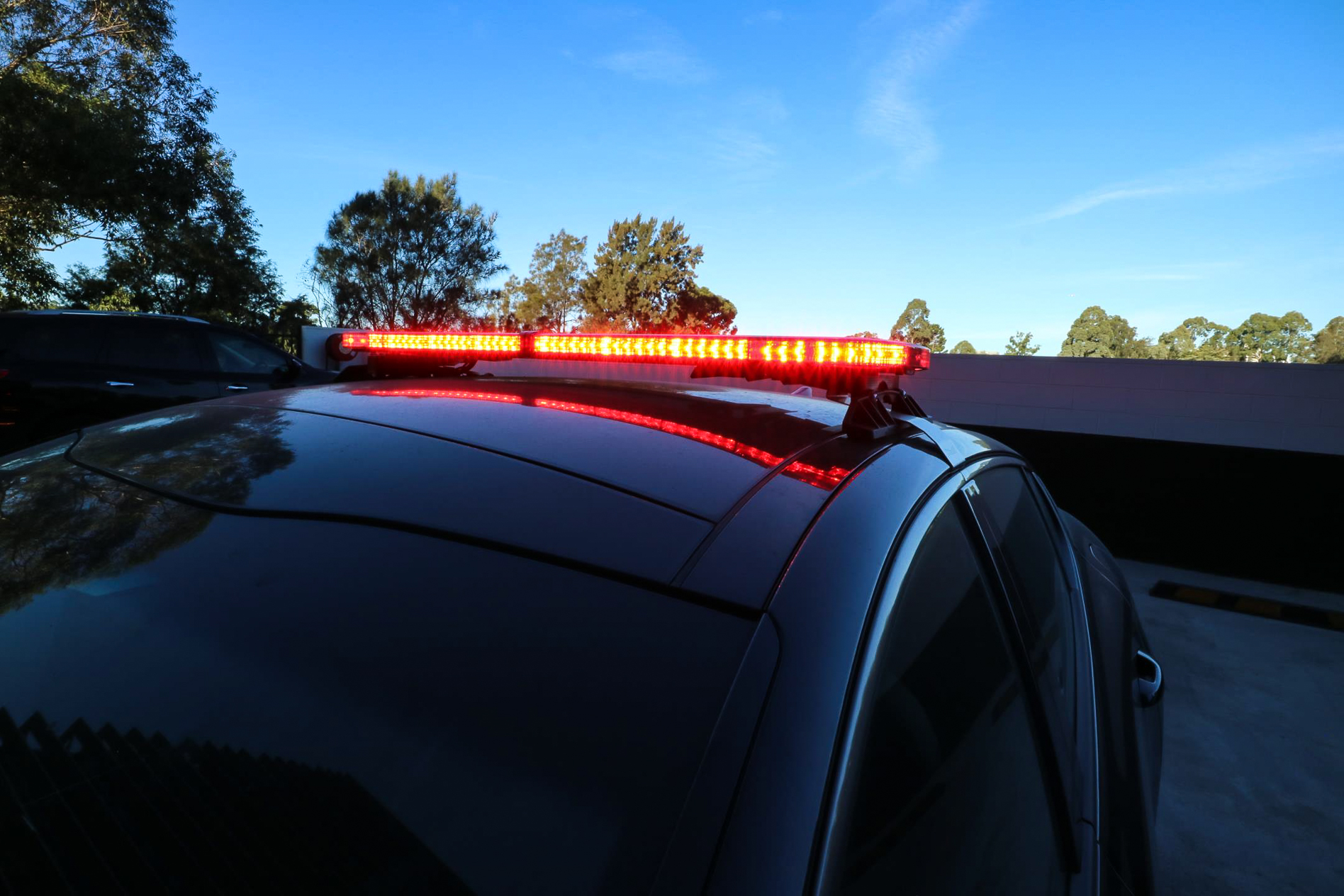
One element of the new build is the use of biometrics. By using a biometric scanner, which references seven million data points on a police officer’s palm, up to eight logins are eliminated, and it could even control items like onboard weapons and evidence lockers.
“Even identical twins don’t have the same palm ID, and you can’t even chop off a person’s hand to use it,” deadpanned Hamer.
The top of the Stinger’s gear shifter has been replicated and replaced as a palm reader, which can be read on either hand. Three programmable buttons have also been moulded in for easy access to key systems like radios and sirens.

Not only can the reader log an officer into criminal databases, but it can also set seat and mirror positioning in any bio-reader equipped patrol car. “If you steal a cop car, double encryption means you can’t steal data by stealing a police car,” confirmed Hamer.
Fujitsu is currently working directly with Kia to add a generic waterproof connector that will allow a light bar array to be added in 10 minutes, not over multiple days. As well, the number of aerials can be greatly reduced to further simplify installation.
A six-week install could be reduced to two weeks; “that’s our target,” said Hamer
Another area where Fujitsu has streamlined the cockpit is by tapping into the Stinger’s heads-up display to replace the Doppler radar that we all love to hate.
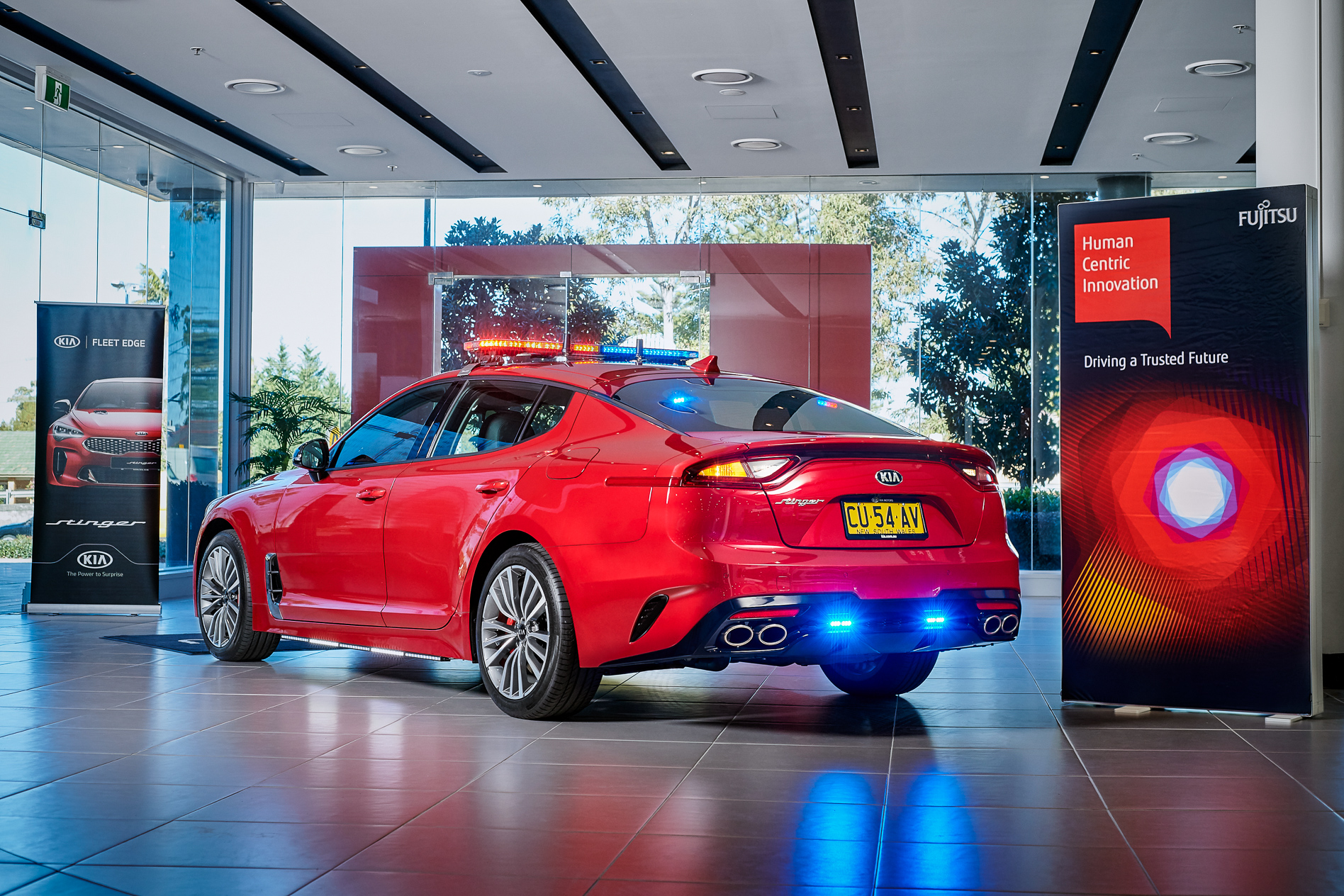
Aboard a typical police car, an audible Doppler radar tone is a constant accompaniment to an officer’s shift, as it’s the change in tone that acts as an alert to a speeding car, and by law, officers can’t actually look at the current radar display while their car is in motion.
Fujitsu has figured a way to take a feed from the car’s radar and add it in into the LDC heads-up display, which can then project the speed of an offending car in the display, then flash up a digital profile of the car itself on the car’s infotainment screen.
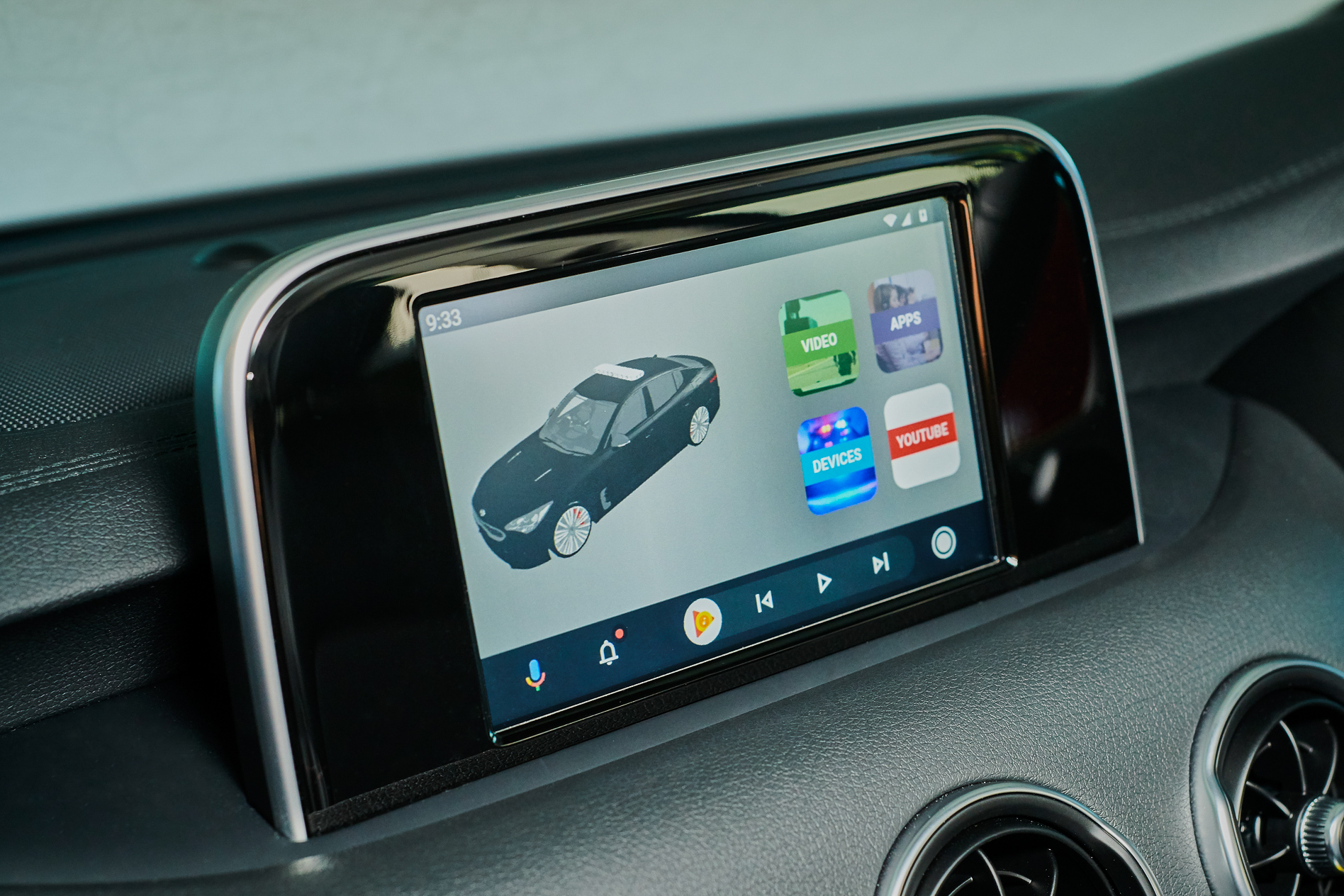
It’s also stripped down the complex lightbox control unit, which enabled police to vary intensity and sound levels of light bar, as well as adding extra features like side-strip lighting to help visibility in intersections and strobing white LEDs that don’t silhouette officers and can disorient a perp who might be aiming a weapon at the cop car.
Many functions that required the use of a large laptop have also been inserted into the operating system of the multimedia touch screen, all thanks to Android Auto.
Another interesting advance is in the area of number plate detection. There’s a trend towards stealing and substituting plates, and the current number plate recognition system will only trigger on a plate that’s been reported stolen.
But if the plate hasn’t been missed, it can be used on another car for nefarious purposes.
One example is a petrol station in Victoria that loses $20,000 a month in stolen fuel, according to Hamer, and police have reportedly suggested that servos take fuel theft claims under $100 directly to insurers.
The Fujitsu system, however, can actually marry the plate with the known vehicle type logged in a state’s rego database, thereby detecting a dodgy plate fitment.
This is the tip of the iceberg when it comes to the potential of this system. The red car you see here is the second generation car, and the first was displayed at an international law enforcement convention that was held earlier this year.
“Police forces from other countries could believe what they were seeing,” said Hamer. “They were asking ‘how can you guys have developed this stuff here?’ It’s incredibly exciting stuff, and there’s a lot of potential here.”

It’s not only in the area of electronic integration that police forces are benefitting from original equipment suppliers to the automotive industry.
Tyre maker Continental supplies Kia with the high-performance ContiSportContact 5 tyre as standard and it’s become the tyre is the preferred tread of choice for several of the law enforcement agencies that use the Stinger, not least because of a unique and very clever sealing technology on the underside of the tread face.
Known as ContiSeal, the thin membrane acts to quickly seal a puncture as it occurs, minimising pressure loss at the time of an impact.
ContiSeal-equipped tyres are also fitted to cars like the Volkswagen Tiguan range, and the company has just manufactured its 15-millionth ContiSeal-equipped hoop.



